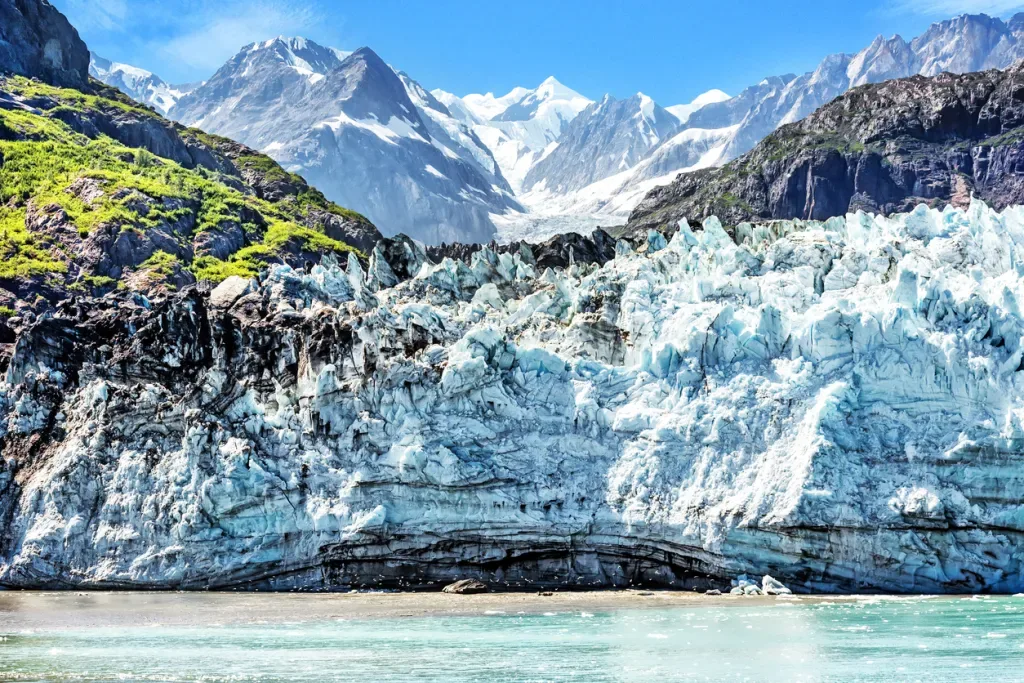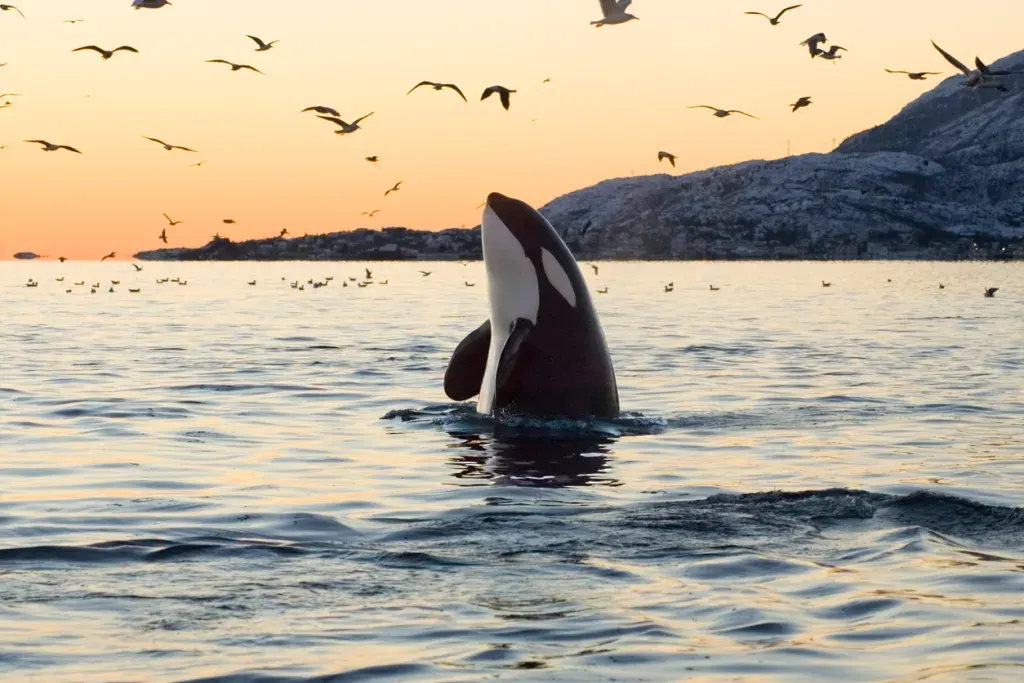Glacier Bay is breathtakingly beautiful but also incredibly dangerous. You could find yourself in a risky situation if you’re not careful.
It’s home to several creatures that you need to take seriously. Treat them with respect unless you want to cut your Alaskan adventure short.
Today, we’re looking at the wildlife you could encounter while exploring Glacier Bay and offering some tips on how to stay safe.
Let’s get started!

About Glacier Bay, Alaska
Glacier Bay was named a national monument in 1928 and a national park and preserve in 1980. It’s one of the world’s largest protected areas, with over three million acres of fjords, coastlines, and dramatic mountains. Whether you’re looking for inspiration or adventure, you can find it here.
More than 50 named glaciers are in the park, which welcomes over 400,000 visitors annually. Due to its remote location, most guests find their way here via cruise ship. Luckily, there’s plenty to see and do no matter how you arrive.
Many of the activities throughout the park involve the water. You can expect opportunities for boat tours, iceberg viewing, and fishing. However, take advantage of the once-in-a-lifetime chance to go whale watching. If you’d rather stay on land, there are more than ten miles of well-maintained hiking trails in the park’s most popular area, Bartlett Cove.
If this is on your bucket list, you better start preparing. The landscapes and weather conditions can be extreme. Failing to plan ahead can be a treacherous decision that you’ll instantly regret.
Carry this pocket guide with you to identify all the local flora and fauna: Glacier Bay National Park & Preserve: A Folding Pocket Guide to Familiar Plants & Animals.
Dangerous Creatures in Glacier Bay
In addition to the rough landscapes and unpredictable weather, Glacier Bay has quite a few dangerous creatures. Let’s look at the critters you should be mindful of while exploring.
#1 Black and Brown Bears
Alaska takes first place when it comes to states with the highest bear population. Seriously, it isn’t even a contest. There are over 100,000 black bears and upwards of 30,000 brown bears. Additionally, it’s the only state where you’ll find polar bears and the elusive glacier bear.
While you may not be able to avoid all encounters, you can drastically reduce the risks. Familiarize yourself with safety procedures before venturing off into the wild. Give them space, make plenty of noise, and never get between them and their young.
No matter how well you plan, you could still have an intense encounter with one of these beasts. If this occurs, stay calm, back away slowly, and have your spray within reach.
The last thing you want to do is run, which could spark their hunting instincts. Trust us. You’ll lose this race no matter how fast you think you are.
#2 Wolves
Another dangerous creature found throughout Glacier Bay is the wolf, the largest member of the canine family. These animals tend to steer clear of humans but can attack, especially when protecting their young. Like most wildlife, they’ll do whatever they can to protect their babies.
To prevent risky encounters with wolves, give them their space. You’ll want to stay at least 100 yards from them. If you come across any, lower your head in a submissive posture and back away slowly. Do not turn your back or run, as this will trigger their prey drive. If there’s a group of people or a fire nearby, try to get to them. At worst, you can climb a tree, but you may be there for a while.
It’s a great idea to carry a pair of binoculars or a camera with an intense zoom lens to get a better look at wildlife. This can allow you to appreciate the beauty of these majestic creatures from a safe distance.
We answered: Can You Drive To Alaska Safely?
#3 Mountain Lions
Whether you call them mountain lions, cougars, or pumas, watching for these feisty felines is essential. These massive cats are solitary animals that can be rather sneaky. While they typically feed on deer and smaller wildlife, they’ll attack humans.
Unfortunately, mountain lions are more likely to prey on a child than an adult. Make sure you keep children and pets close. While attacks are rare, they do occur from time to time.
Avoid hiking or jogging alone, and don’t approach them. They typically evade confrontation and flee the scene when possible. Don’t crouch down or bend over, as it can make you appear to be prey. Do whatever you can to appear big and scary by making as much noise as possible. If attacked, fight back with rocks or sticks.
#4 Moose
While moose were relatively rare in Glacier Bay in the past, there’s now a healthy population of these dangerous creatures. They typically hang out in the meadows and open forests. However, despite what Bullwinkle may have taught you, there’s nothing funny about them.
They’re responsible for more injuries than bears in Alaska. If you cross paths with one, you better stay back. Be patient in these situations because they’ll likely go away on their own. They tend to give several warnings if you get too close, but they’ll attack when needed.
During an attack, get behind something solid. Find a thick tree or a metal pole and put it between you and the beast. If you have time to get into a car or building, it’s even better. The goal is to keep plenty of space between you until it loses interest.
#5 Orca Whales
Despite no known fatal attacks on humans from orca whales, they’re often called “killer whales.” However, just because the fatality risk is low doesn’t mean they’re not dangerous.
There are reports of these massive mammals ramming into boats. Some encounters have been so intense that the damage was enough to sink a vessel. Unfortunately, researchers have yet to learn why the orcas act in such a way.
When a 10,000-pound animal behaves unpredictably, you can’t afford to take it lightly. Make sure you’re aware of your surroundings and always enjoy aquatic activities in groups. If you see wildlife in the water, observe it from a distance and avoid sudden movements.

#6 Steller Sea Lions
The Steller sea lion is the largest and most aggressive in the sea lion family. They typically feed on fish, squid, and octopus. While they generally pose little danger to humans, they’re large, wild animals. A Steller sea lion will defend itself if it feels threatened or agitated.
During most of these encounters, they often give warning signs before attacking. You’ll likely hear vocalizations, a change in posture, or bluff charges. Back away slowly and give them as much space as you can. You’re playing with fire if you’re within 50 yards of them. Local regulations may even require maintaining a certain distance to keep you and the animal safe.
Heading farther north on your Alaska trip? 5 Most Dangerous Creatures in Stunning Denali National Park.
#7 Shellfish
If you enjoy eating shellfish, doing so in Glacier Bay can be dangerous. The area has a high concentration of Gonyaulax, a dinoflagellate plankton that secretes toxins.
They become contaminated by feeding on food particles in the water. The Paralytic Shellfish Toxin (PST) builds up in their tissue and becomes poisonous. Experts believe that less than a milligram is enough to be deadly for adults.
To avoid issues, don’t consume untested harvests. Purchase from quality restaurants and reputable stores. Thankfully, shellfish and crab sold commercially must go through frequent tests.
Glacier Bay is Dangerous But Worth the Risk
While Glacier Bay offers some unforgettable adventures, it’s also extremely dangerous. Some of the most deadly wildlife live throughout the area.
While experiencing nature can be thrilling, it’s not always safe. Following the proper precautions is the best way to guard against attacks. While it requires some effort, humans and nature can coexist.
We’ll Help You Find the Best Free Camping in the USA
You should give it a try!
As a matter of fact, these free campsites are yours to enjoy. Every time you pay federal taxes, you’re contributing to these lands.
Become a FREE CAMPING INSIDER and join the 100,000 campers who love to score the best site!
We’ll send you the 50 Best Free Campsites in the USA (one per state). Access the list by submitting your email below: